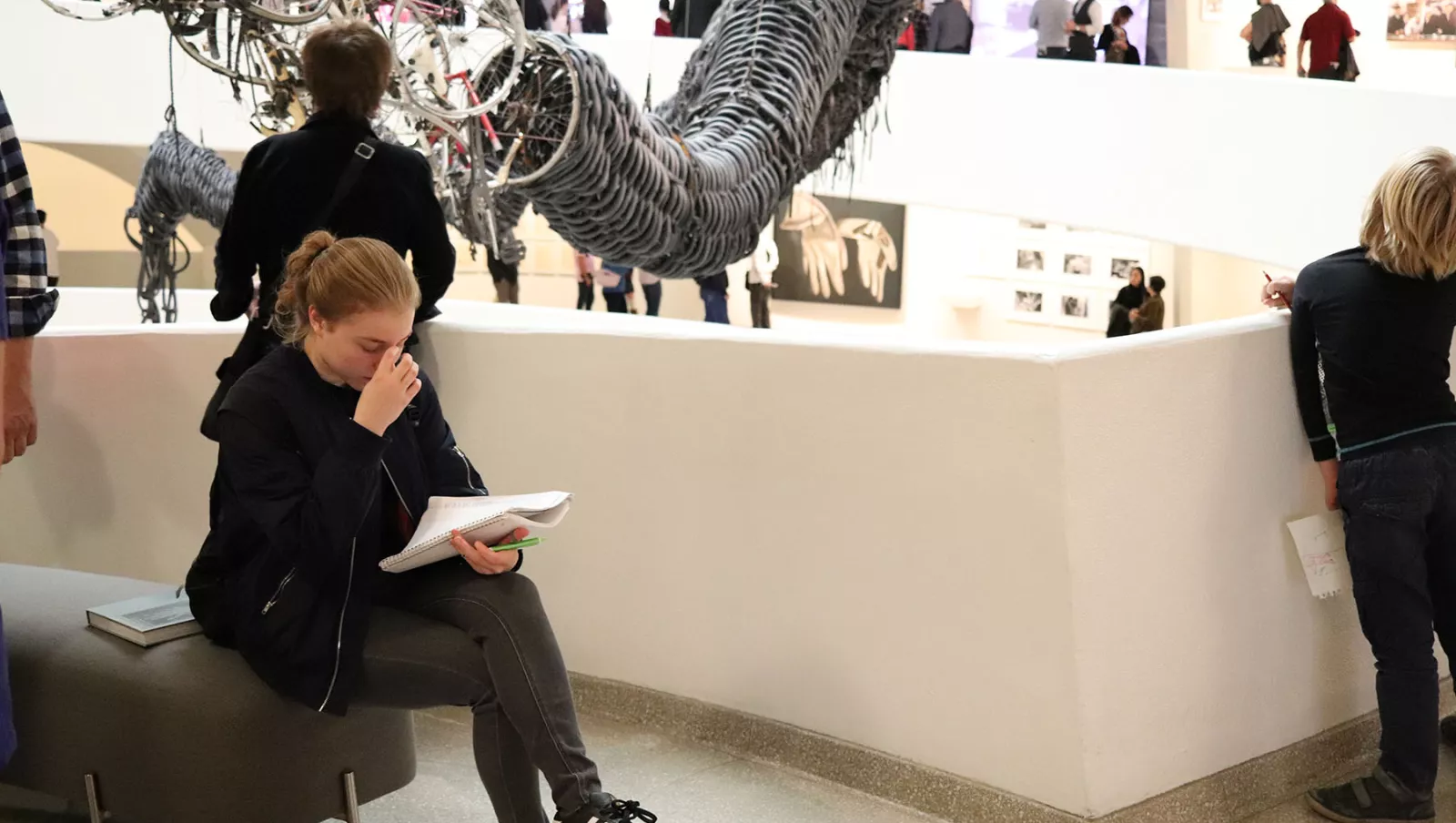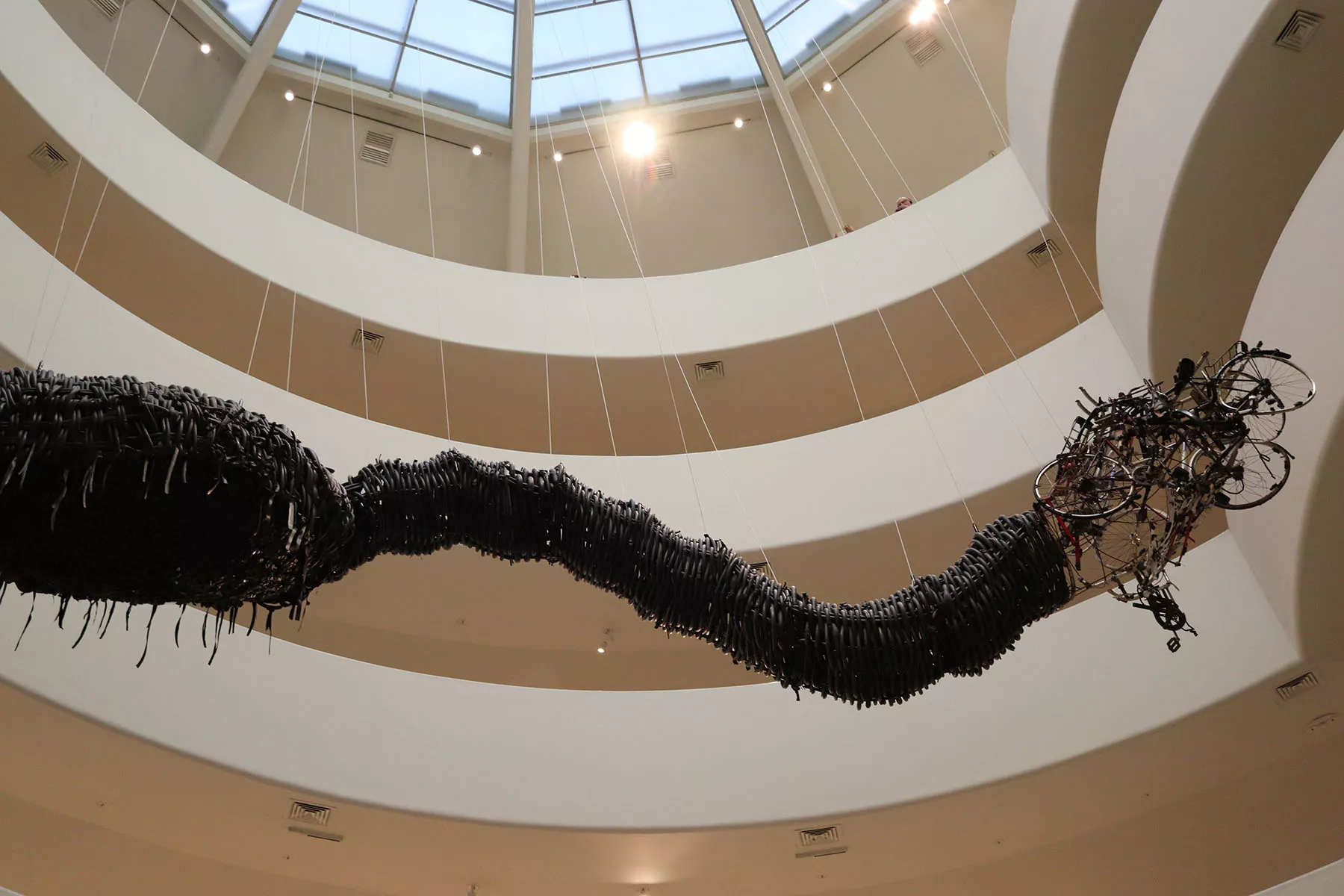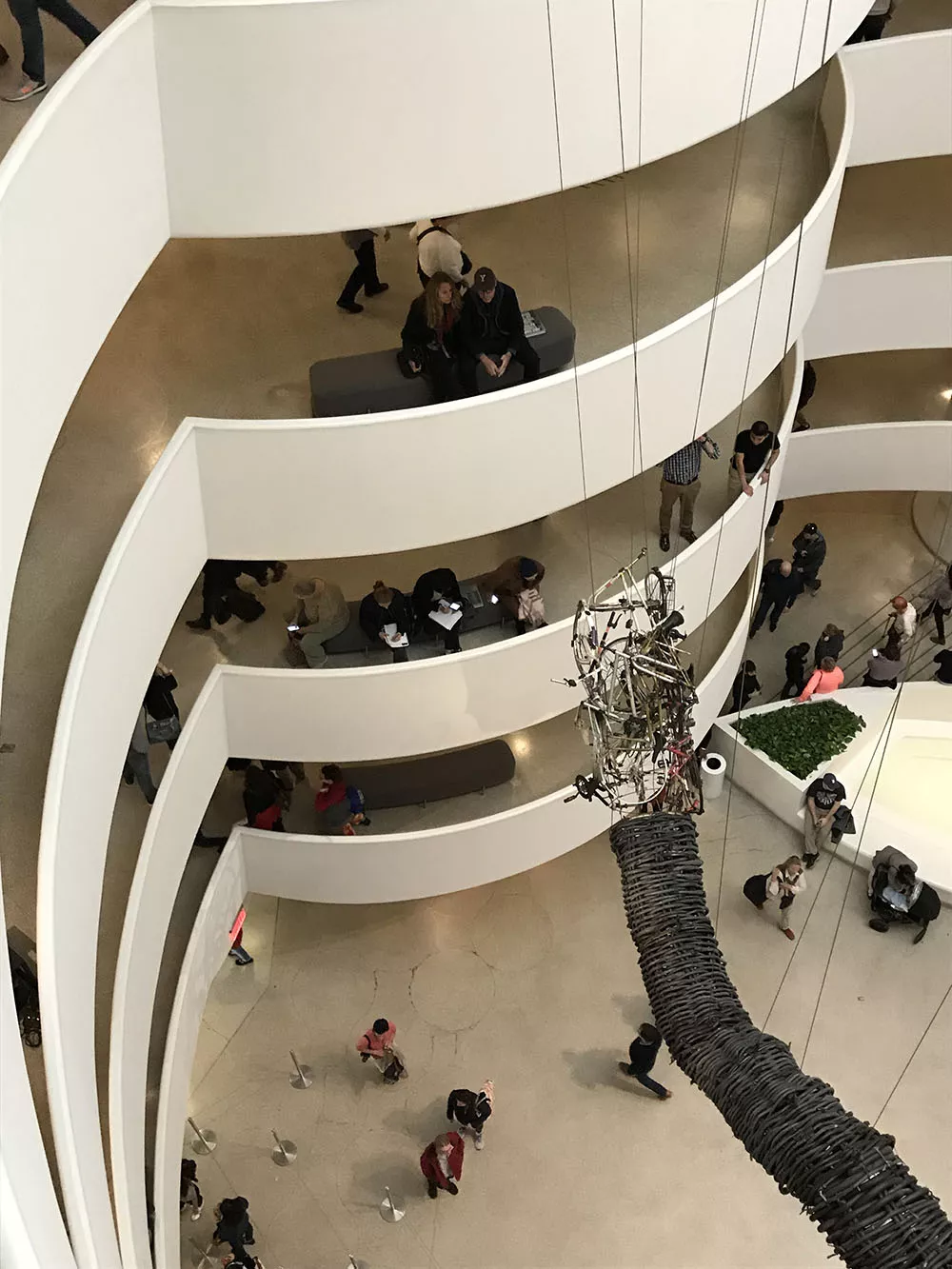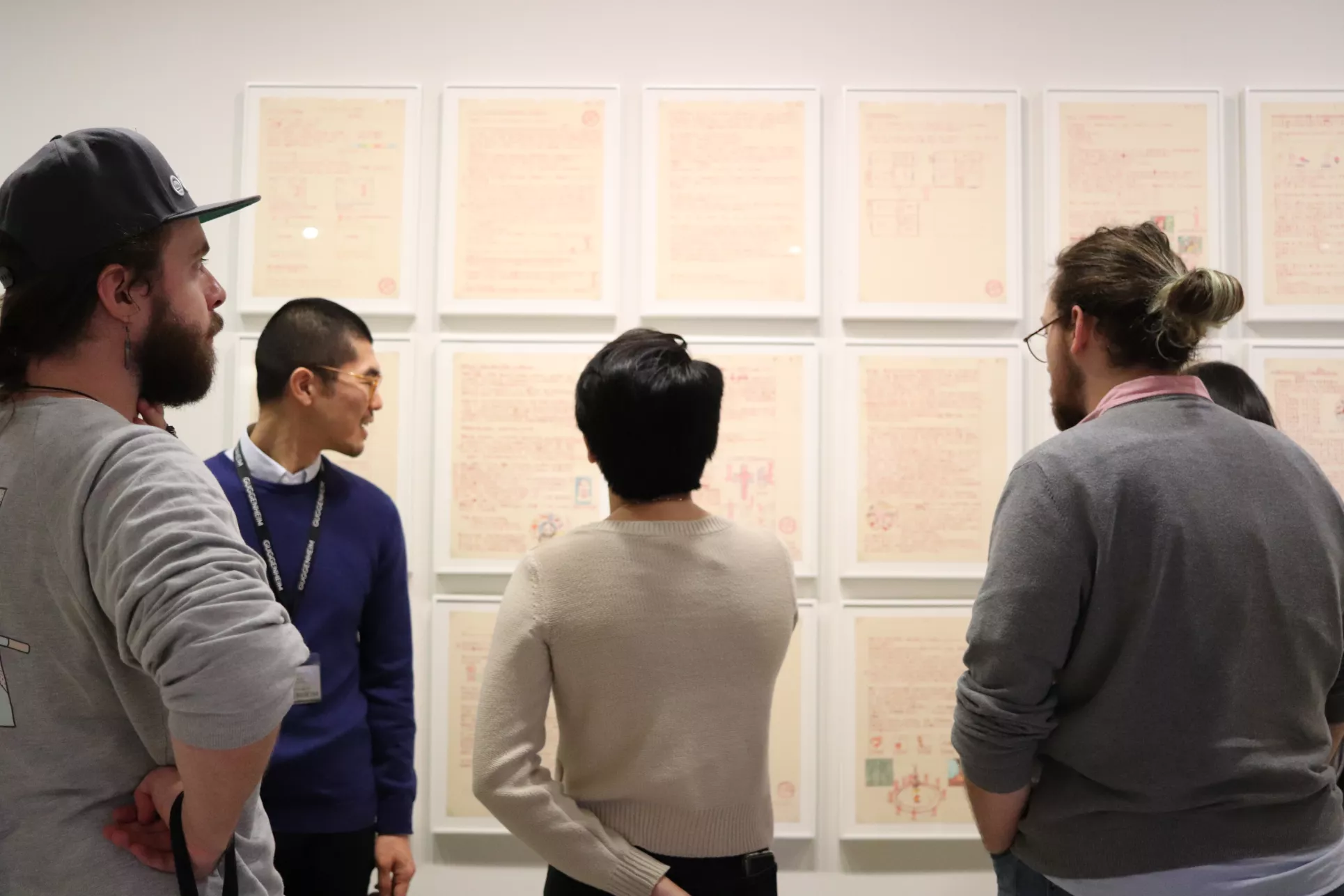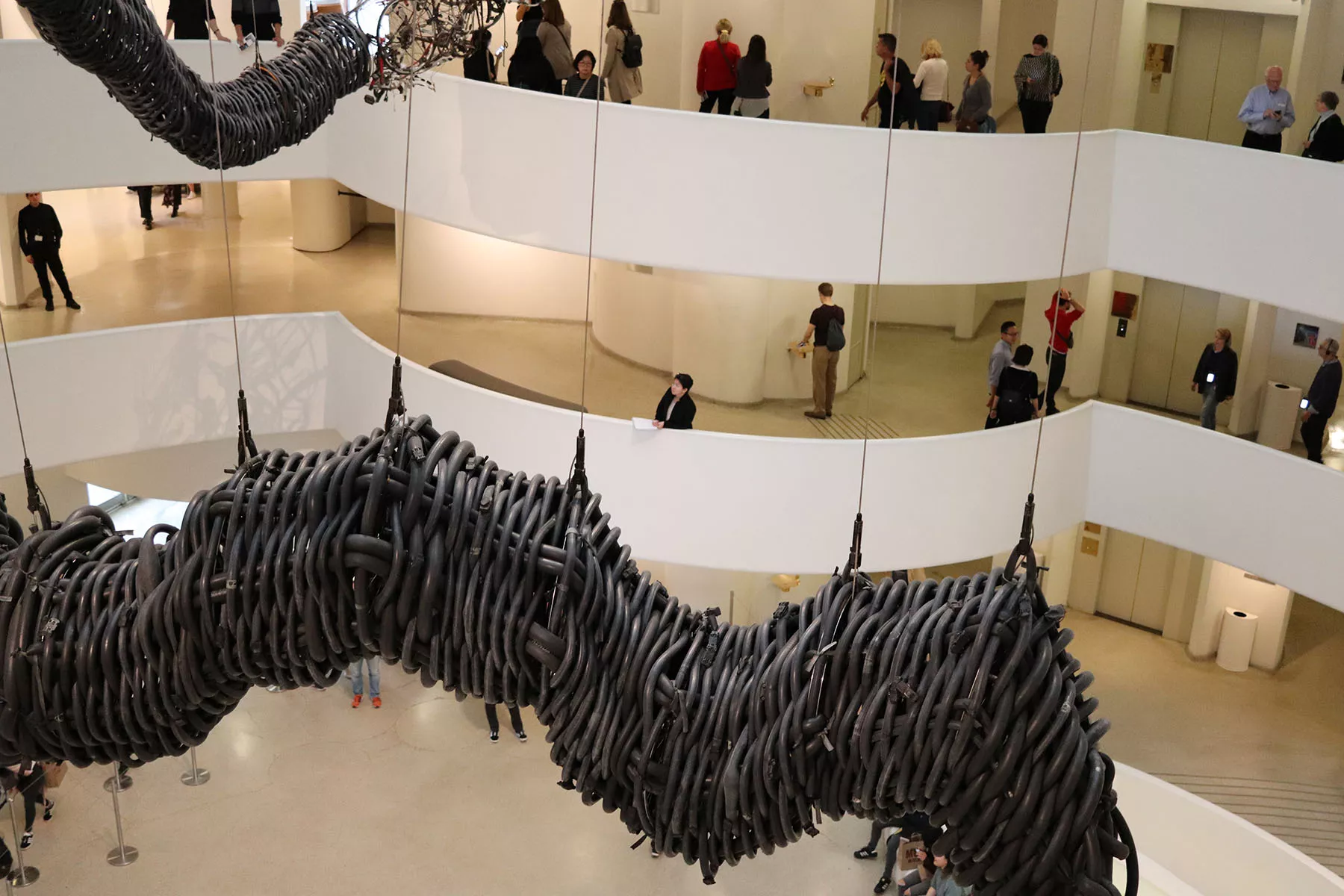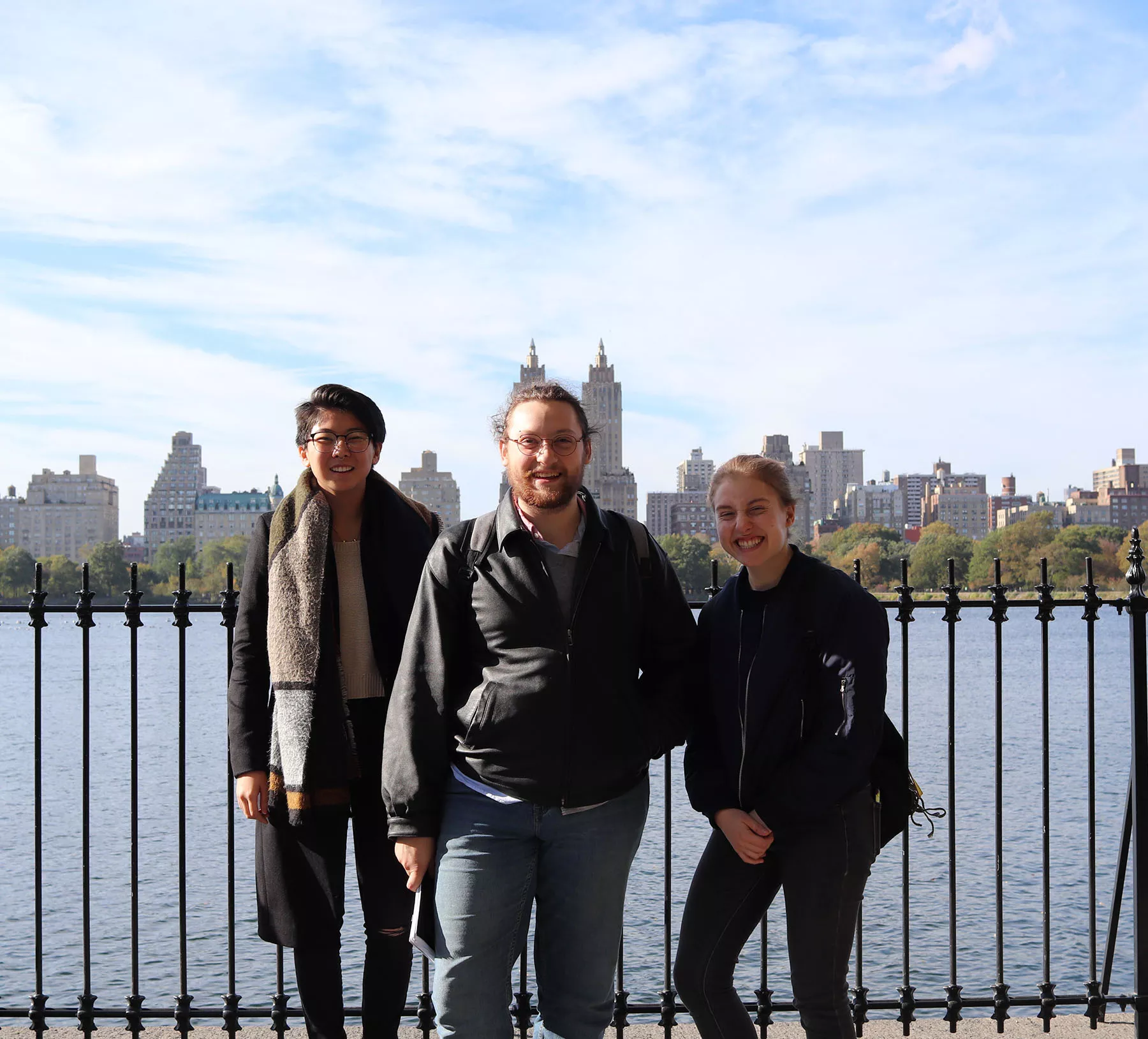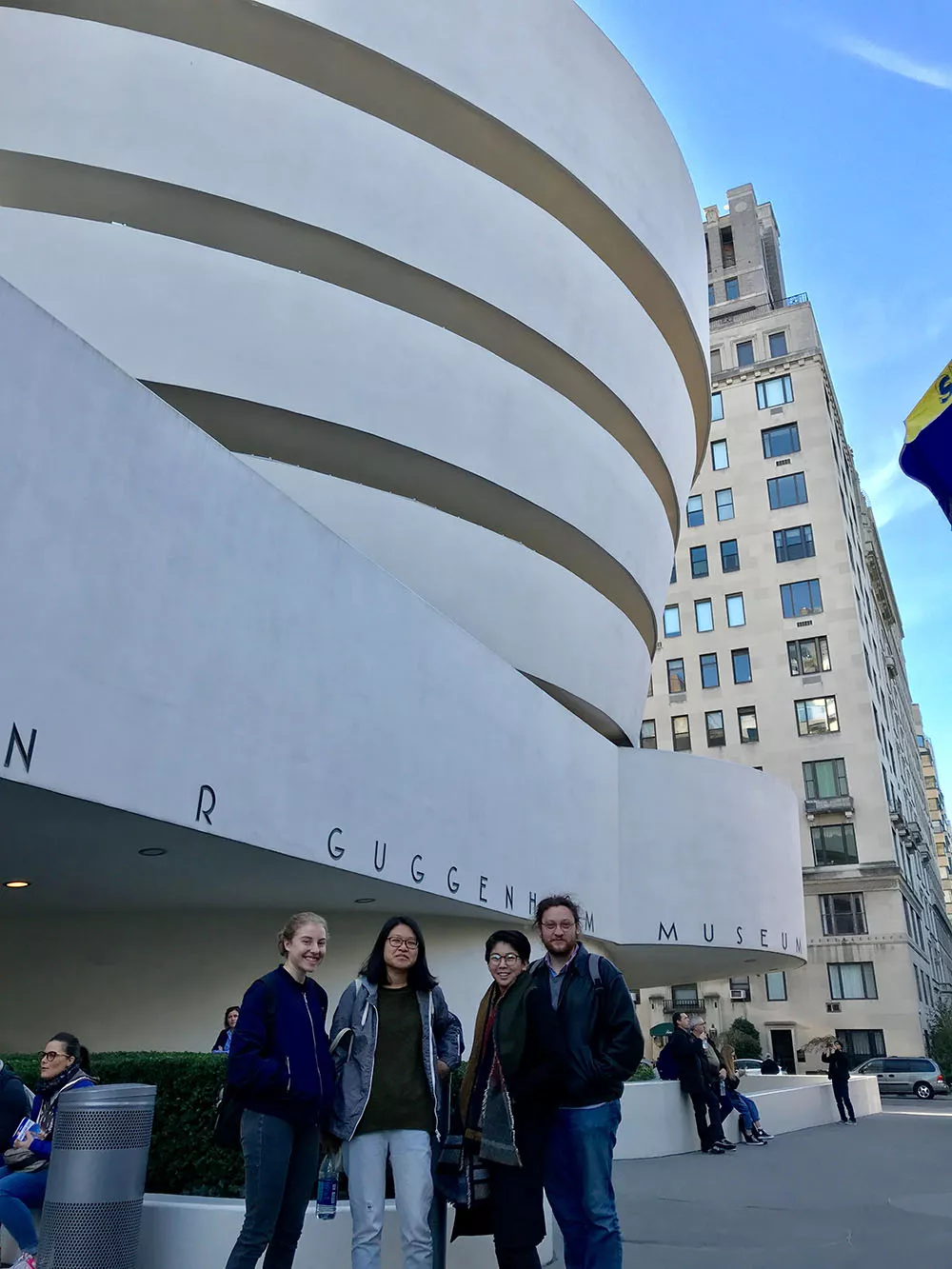'Art and China After 1989: Theater of the World' Is Centerpiece of Student Trip to Guggenheim
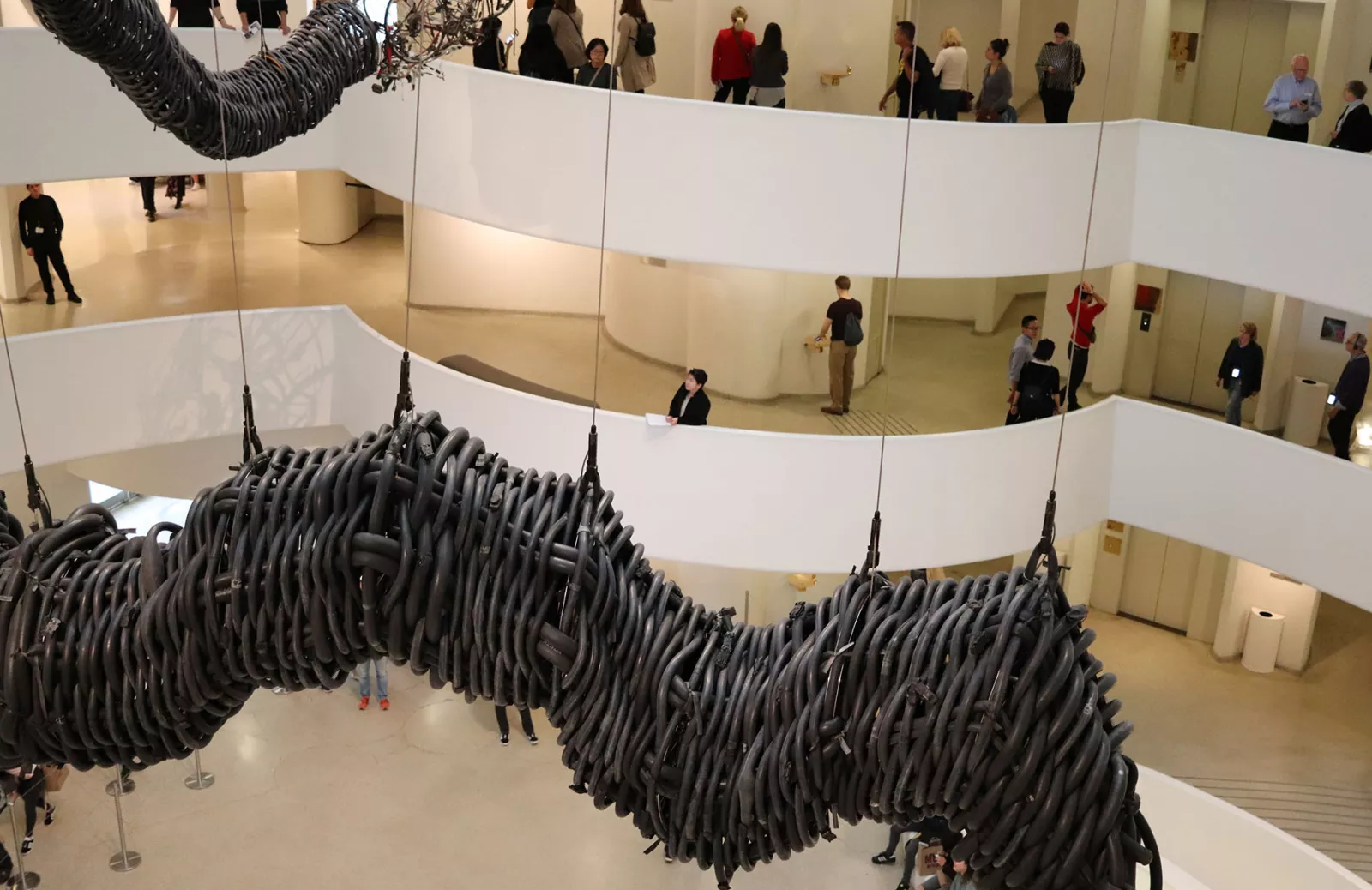
Students in the East Asian Languages and Cultures seminar “Animals, Vegetables, Minerals: Art and Environment in East Asia” took a day trip to the Guggenheim Museum in New York City on Saturday, Oct. 28 to explore some of the most pressing questions they have debated this semester: What is humans' relationship to nature? How are animals used to express human struggles? What are the ethical judgments that these questions pose?
The course is taught by Assistant Professor of East Asian Languages and Cultures and Comparative Literature Shiamin Kwa.
The trip began with a private tour of the exhibit with a staff member of the Guggenheim Museum, who walked the participants through the exhibit, drawing attention to the thematic arrangements.
The centerpiece of the exhibition, Huang Yong Ping’s “Theater of the World” (1993), part of the broader "Art and China after 1989" exhibition, brought all of those questions to the forefront when it became the center of controversy after the museum modified the exhibit in response to threats from animal protesters. The installation, which was originally designed to hold reptiles and insects in a turtle-shaped structure, is now displayed without the live creatures. Students were able to discuss the noticeable absence with the guide, who led a discussion of cultural and historical context and how they tie in to questions of freedom of expression.
After a tour of highlights of the exhibit with a guide, the seminar participants separated to each work individually on a “slow reading” exercise on a piece that they chose themselves from the exhibit. Students were told to bring a pencil, a notebook, and the willingness to dedicate two hours of their time to the full engagement of closely looking at a piece of art.
The process of taking the time to engage closely with a work of art for an extended period of time also underscored one of the most prominent themes in the Guggenheim’s exhibit: rapid growth. Pieces throughout the collection highlighted a sense of speed and sudden change. In contrast, students were tasked with sitting in quiet reflection with a notebook, a pencil, and intellectual engagement.
This class trip was sponsored by a grant from LIASE, the Luce Initiative on Asian Studies and the Environment, which encourages innovative approaches to Asian studies teaching and research at the undergraduate level through the lens of the environment and sustainable development.
